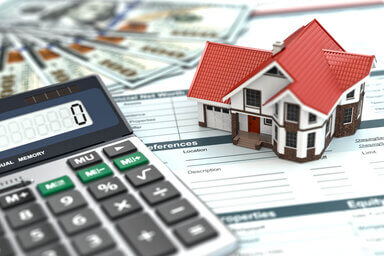 A home equity line of credit (HELOC) is a type of second mortgage that allows homeowners to borrow money using their home as collateral. If you have enough equity in your home and good credit, you can apply for a line of credit, and a maximum potential credit line you can utilize will be set according to the lender's policies.
A home equity line of credit (HELOC) is a type of second mortgage that allows homeowners to borrow money using their home as collateral. If you have enough equity in your home and good credit, you can apply for a line of credit, and a maximum potential credit line you can utilize will be set according to the lender's policies.
The amount available for you to borrow will depend on the equity stake you have in your home, your credit rating, debt-to-income ratio and any loan-to-value limits that the lender may utilize. Using a home equity calculator can help you discover how much you can borrow.
Unlike a home equity loan, where proceeds are usually given to you in a lump sum, a home equity line of credit allows you to draw money in increments as you need to, almost like a credit card. As you repay the loan, this replenishes the available credit line, and you can borrow again on the line of credit as long as you do not exceed the credit limit.
A home equity line of credit can be valuable if you want to borrow against your property's value for ongoing expenditures like tuition payments, elder care, recurring home improvement projects and more.
While a HELOC can still be used for any reason, the interest paid on a HELOC is no longer tax-deductible unless the proceeds are used to buy, build or substantially improve your home. Even then, interest deductibility is subject to cumulative mortgage interest deduction limits.
Home equity line of credit terms
A HELOC typically has a variable interest rate, usually based on a certain percentage above the current prime rate. Interest is charged only on the amount actually borrowed by the homeowner rather than on the entire line of credit.
Lenders offer HELOCs at various terms ranging from five years to 20 years. These are often broken into "draw" or "access" periods followed by a "repayment" term. Once the draw period ends, you can no longer use the credit line for new borrowing, and must begin to repay any outstanding balance which remains. By the end of the repayment term, the balance must be paid in full. During the draw period, you can often choose how much to pay each month as long as you make the minimum interest payment which is due.
Some HELOCs allow borrowers to "break off" pieces of the debt into fixed-term repayment schedules at fixed interest rates. These can be called a "loan within a line" or "fixed-rate loan option".
If you are considering a HELOC, be sure to pay attention to interest rates, because an increase in interest rates could result in an increase in your monthly payments and could cause the repayment balance to increase. Most HELOCs are based on the Prime Rate.
HELOC drawbacks
Since your HELOC debt is secured by your home, if you cannot repay the loan you are in danger of defaulting on the loan and potentially losing your home to foreclosure. Careful budgeting is required to make sure you can handle the extra loan payment each month on top of your housing costs and other monthly expenses.
Your ability to borrow may be reduced or denied if your credit situation or local housing market conditions should deteriorate. Unlike lump-sum loans, HELOC agreements often allow for such "curtailments" or "freezes" by the lender if adverse conditions should arise, and you could find access to your credit line reduced or cut off altogether at a most inopportune time.
For much more about HELOCs and home equity loans, check out HSH.com's comprehensive Guide to Home Equity Loans and Lines of Credit.



